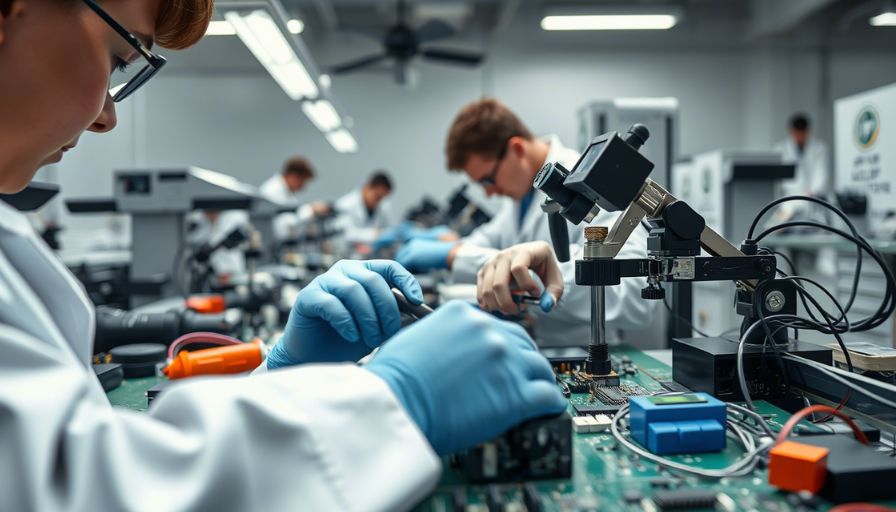In modern electronics, sensors play a crucial role in automating responses to environmental changes. Among these, the Light Dependent Resistor (LDR), also known as a photoresistor, is widely used in applications ranging from automatic lighting to light meters and smart home devices. However, integrating an LDR into a functional electronic product requires more than just selecting the component — it involves a well-structured process executed by professional PCB assembly manufacturers.
In this article, we will walk through how a simple LDR sensor becomes part of a fully assembled printed circuit board, covering every step of the PCB assembly manufacturer process.
What is an LDR Sensor?
An LDR (Light Dependent Resistor) is a passive electronic component whose resistance decreases as the light intensity increases. This property makes LDRs ideal for circuits that need to react to changing light conditions, such as:
-
Automatic streetlights
-
Camera exposure controls
-
Solar garden lights
-
Light-sensitive alarms
While simple in function, integrating LDRs into sophisticated electronic devices requires careful design, manufacturing, and assembly.
The PCB Design Stage
Before assembly begins, engineers design the PCB to accommodate the LDR and other components. Key considerations during the design phase include:
-
LDR Placement: The sensor must be positioned to receive optimal light exposure.
-
Circuit Design: The PCB schematic ensures the LDR works seamlessly with other components such as microcontrollers, resistors, capacitors, and relays.
-
Footprint Selection: Correct footprint data is essential for automated assembly equipment to place the LDR accurately.
At this stage, design software (such as Altium Designer or KiCad) helps to create precise layouts that will guide the PCB fabrication and assembly process.
PCB Fabrication
Once the design is finalized, the PCB goes into fabrication. This includes:
-
Material Selection: Typically, FR-4 is used as the base material.
-
Copper Layer Formation: Conductive paths are etched to connect the LDR with other circuit elements.
-
Solder Mask Application: A protective layer is added to prevent short circuits and protect traces.
-
Silkscreen Printing: Labels and component identifiers are printed on the board for reference during assembly.
The fabricated bare board is now ready for component mounting.
PCB Assembly: The Role of PCBA Service Providers
At this stage, PCBA service providers take over. Their expertise ensures that each component, including the LDR, is accurately placed and soldered onto the board. The assembly process generally includes:
1. Solder Paste Application
Using stencils, solder paste is applied to the PCB pads where components will be mounted. This paste contains tiny solder balls suspended in flux.
2. Component Placement
High-speed pick-and-place machines position the LDR and other components on the board. Accurate placement is critical, especially for sensors like the LDR, where orientation and exposure angle may affect performance.
3. Soldering Process
-
Reflow Soldering: For surface-mount devices (SMD), the board passes through a reflow oven that melts the solder paste, forming reliable connections.
-
Through-Hole Soldering: If the LDR or other components are through-hole types, wave soldering or manual soldering is used.
4. Inspection and Quality Control
Quality checks ensure proper functionality:
-
Automated Optical Inspection (AOI): Cameras check for placement and soldering defects.
-
X-Ray Inspection: Used for hidden joints.
-
Functional Testing: Verifies that the LDR responds correctly to varying light levels.
5. Cleaning and Final Assembly
After soldering, boards may be cleaned to remove flux residues. The completed PCBs are then prepared for integration into final products.
Benefits of Working with a Professional PCB Assembly Manufacturer
Choosing an experienced PCB assembly manufacturer for LDR-based projects offers several advantages:
-
Precision: Ensures correct placement and functionality of the light-sensitive components.
-
Efficiency: Fast, automated processes reduce production time.
-
Consistency: Advanced quality control ensures every board meets the required specifications.
-
Scalability: Capable of handling both prototype and mass production runs.
Conclusion
The journey from a simple LDR sensor to a fully functional PCB involves careful design, precise manufacturing, and expert assembly. PCBA service providers play a vital role in ensuring that each component functions as intended, maintaining high levels of quality and reliability.
Whether you’re developing consumer electronics, industrial controls, or IoT devices, partnering with the right PCB assembly manufacturer is essential to turn your LDR-based designs into high-performance products.
